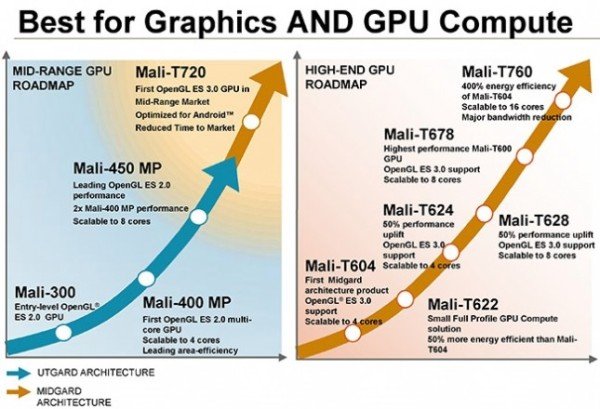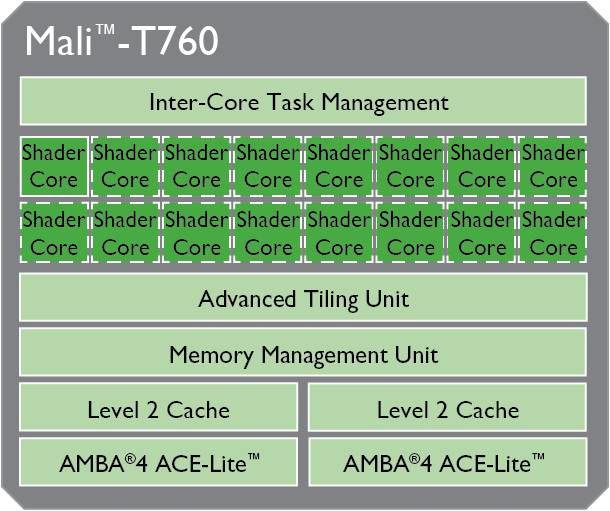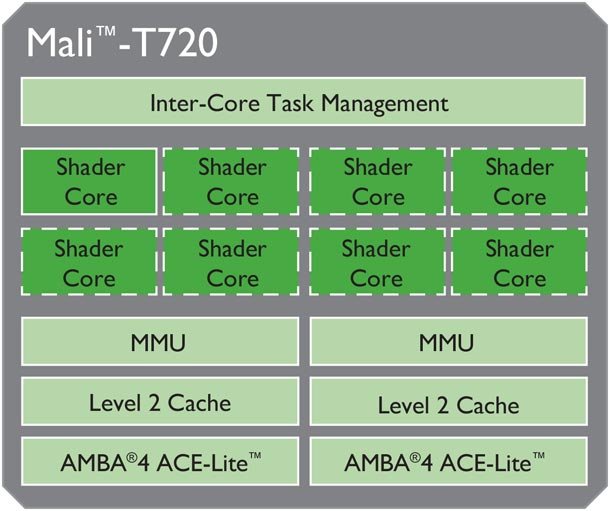ARM has recently announced two new Mali GPUs: Mali-T760 for high-end smartphones and tablets, and Mali-T720 for entry-level devices, but with better performance and energy performance compared to previous cost-optimized Mali GPUs, as well as OpenGL ES 3.0 support. These new GPUs have already been licensed by companies such as MediaTek, Rockchip, Samsung and LG Electronics.

Mali-T760 GPU
ARM lists the key benefits and features of the ARM Mali-T760 GPU as follows:
- An increase in energy efficiency and performance of approximately 400 percent over the ARM Mali-T604 GPU;
- Scaling to 16 shader cores, which doubles the previous generation, plus an increase in both performance per shader core and overall performance;
- Reduction of internal and SoC bandwidth utilization, significantly reducing energy consumption, enabled by ARM Frame Buffer Compression (AFBC), and Smart Composition, delivering more than 50 percent reduction in total memory bandwidth utilization;
- Simplified implementation through reduced wire count and layout congestion for larger core count implementations, accelerating time to market;
- ARM POP IP for ARM Mali-T760 GPU will speed development and shorten implementation for market-leading performance implementations initially targeting TSMC 28HPM and TSMC 16FF process technologies.
Visit Mali-T760 page for further details.
Mali-T720 GPU
Destined for entry-level Android devices, Mali-T720 has the following key features and benefits according to the company:
- Greater than 150 percent energy efficiency increase over the ARM Mali-400 GPU;
- Faster implementations achieved through high routing density and a simplified design;
- Die area reduction by almost 30 percent while increasing graphics performance above 50% over previous cost optimized graphics processors;
- OpenGL ES 3.0, OpenCL and RenderScript APIs
- POP IP for ARM Mali-T720 GPU offers area-optimized implementations balancing low power and performance initially targeting TSMC 28HPM process technology.
Visit Mali-T720 page for more information.
Via AndroidPC.es

Jean-Luc started CNX Software in 2010 as a part-time endeavor, before quitting his job as a software engineering manager, and starting to write daily news, and reviews full time later in 2011.
Support CNX Software! Donate via cryptocurrencies, become a Patron on Patreon, or purchase goods on Amazon or Aliexpress







wonder how these will compare to a tegra4 and stuff.